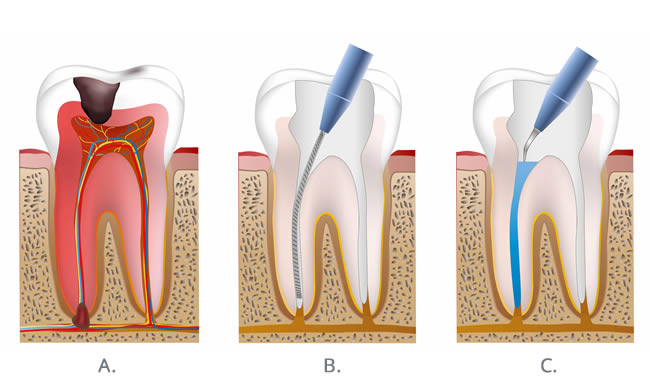Root Canal Treatment
What is root canal treatment?
A tooth's crown, or outer layer, is made up of three layers: enamel, dentin, and pulp. If the decay just affects the first two layers of the tooth, fillings or restorations can treat it. An RCT or endodontic treatment is required in the event that the tooth decay extends to the third layer and results in pulp inflammation or infection.
The procedure involves:
Symptoms:
A toothache is the most typical sign that someone could need root canal therapy. From little to severe pain is possible. The pain could get stronger with time, and eventually, you might even feel it when you bite into food.
The second factor is continued sensitivity. There is a minor possibility that one needs to undergo root canal treatment if they have tooth sensations after eating hot or cold food.
Gum swelling may sometimes indicate the necessity for root canal therapy.
Procedure for Root Canal Treatment:
Step 1:
To ascertain the degree and direction of infection, an X-ray is performed as the initial step. Local anesthesia is administered during the process.
Step 2:
Next, a cavity is prepared to make sure all the infected tooth material has been removed and to establish a proper approach to the pulp.
Step 3:
This is followed by disinfection and shaping of root canals, during this process infected pulp will be removed completely and canals will be disinfected completely
Step 4:
Cleaned and disinfected canals are then sealed and filled with rubber-like filling material known as Gutta-Percha
Step 5:
The last step includes restoration and crown. The tooth cavity is then restored with a filling, followed by a crown
Importance of root canal treatment:

